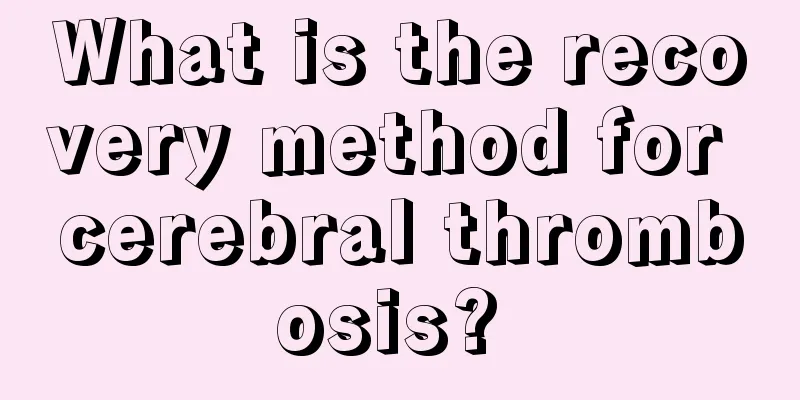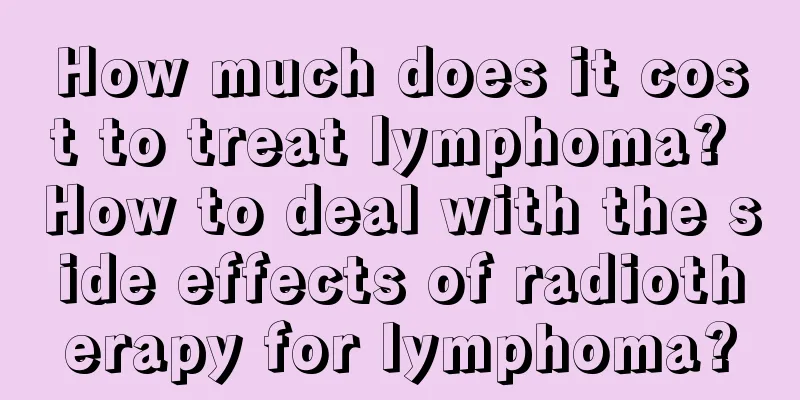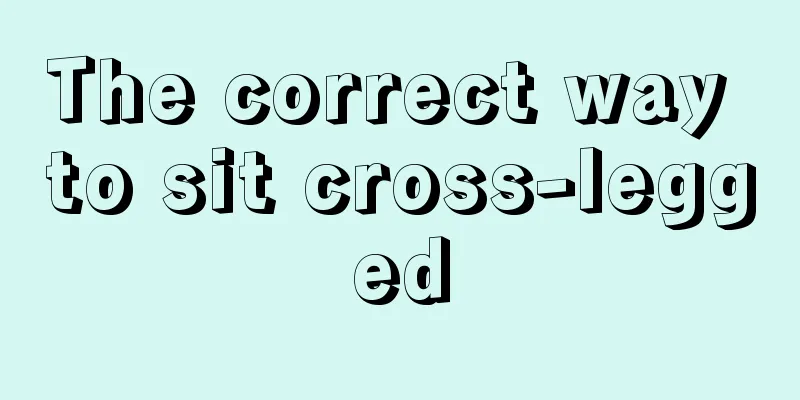What is the recovery method for cerebral thrombosis?

|
Cerebral thrombosis is a common cerebrovascular disease. This disease is more common in the elderly population. Cerebral thrombosis is potentially life-threatening, so treatment and recovery methods for cerebral thrombosis are very important. In order to recover from cerebral thrombosis, patients must pay attention to functional exercise. 1. Functional training should be gradual and persistent, and should not be rushed. The specific operation method is generally divided into three stages: The first stage: the patient is in the early stage of recovery and the hemiplegic limbs are completely unable to move. Exercise methods include massage, manipulation, and passive exercise, aiming to prevent muscle atrophy. These exercises can be completed with the assistance of family members. Generally, each local massage lasts 5-10 minutes, and full body massage does not exceed 30 minutes. Massage is to push forward along the paralyzed muscles with your fingers or palms. Passive exercise is when someone else moves the patient's paralyzed limbs, including every joint, large and small, and the range of motion is as close as possible to the range of motion of a normal joint. 2. The second stage: The paralyzed limbs begin to move but still have no strength to complete active movements. In addition to the methods of the first stage, limb exercises should also include turning over and sitting up, learning to stand with the help of others, holding the back of the chair or bed frame with both hands to move forward, and exercising the muscle strength and joint movement of the lower limbs on the paralyzed side. Usually the recovery of the paralyzed upper limb is slower and more difficult than that of the lower limb, which is related to the anatomical location of the brain nerve innervation. Initially, the shoulder joint is raised, abducted, and externally rotated with the help of others, and the elbow and finger joints are flexed and extended, gradually training to be able to move actively. In addition to early massage and passive exercise for the functional training of both hands, you should regularly do exercises such as flexion and extension, opening and closing of each finger, such as squeezing ping-pong balls, turning an abacus, unbuttoning buttons, holding keys, etc., to promote the recovery of finger function. 3. The third stage: The patient is in the late stage of recovery. This stage mainly focuses on practicing walking and fine finger movements. Practice walking independently, crossing thresholds, and going up and down stairs, but don’t get too tired at one time. It’s best to have someone to protect you. You can gradually increase the amount and distance of activity. Functional exercises for the upper limbs can further practice the flexibility and coordination of the hands, such as combing hair, hitting a ball, knitting, etc. |
<<: What causes frequent urination?
>>: What causes headaches, nausea, vomiting and sweating?
Recommend
What are the quick ways to get rid of acne
Basically everyone has experienced fighting acne,...
Pap smear, grade one, moderate inflammation
Some people have physical examinations in the hos...
What signs of lung cancer should we be alert to in daily life? These 6 signs of lung cancer must be taken seriously
Lung cancer is the malignant tumor with the highe...
Desensitization treatment for chronic urticaria, identify the allergens and then treat
Chronic urticaria can cause great pain to patient...
Does tile adhesive contain formaldehyde?
In fact, many things used in households now conta...
How much does cervical cancer screening cost?
How much does it cost to treat cervical cancer? A...
What are the benefits of practicing splits
If you like dancing, then you must know that lear...
Is there any folk remedy to treat lymphoma
Lymphoma is a common type of malignant tumor, whi...
How to effectively treat hereditary bad breath?
The problem of hereditary bad breath has a great ...
Can babies use ceiling fans?
In the hot summer, the sultry weather will make p...
What are the contraindications of electrotherapy for opening meridians
Foot-stepping electrotherapy to open up the merid...
What is the difference between a sieve tube and a duct?
Many people often confuse sieve tubes and ducts. ...
Is hair loss due to kidney yang deficiency or yin deficiency
Every autumn, many people find that they are losi...
How to care for oily forehead
In fact, many people do not have time to take car...
Brief introduction about teratoma
Teratomas originate from potentially multifunctio...









